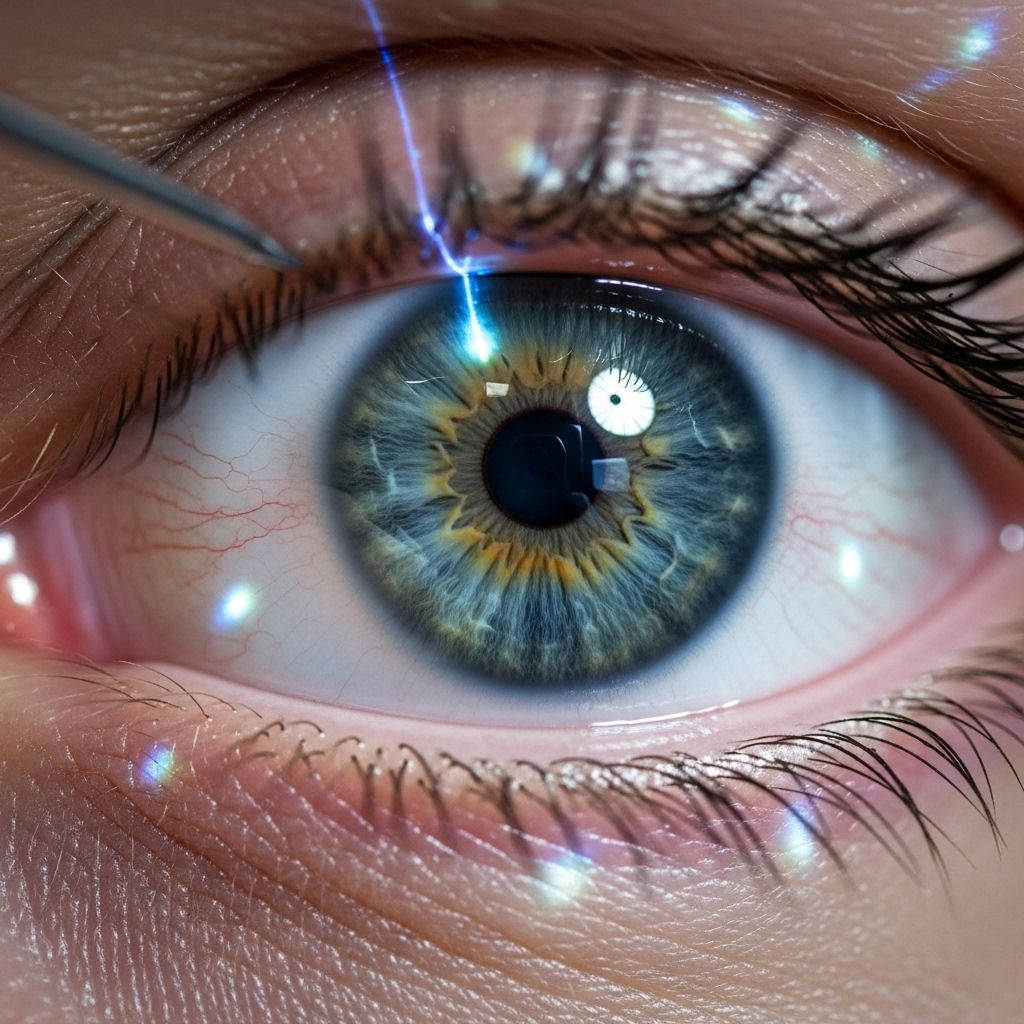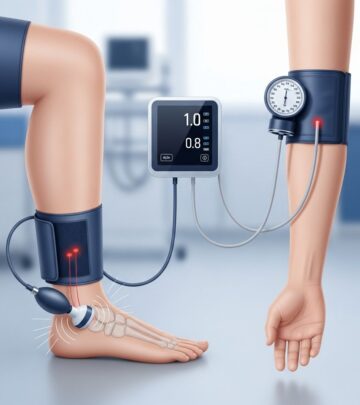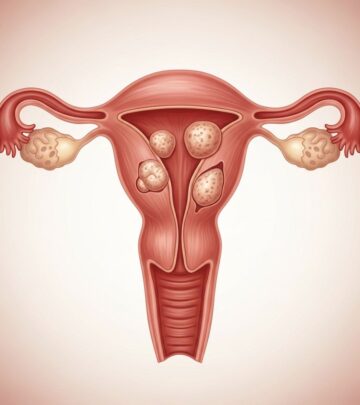LASIK Eye Surgery: What to Expect and How It Works
Discover how LASIK eye surgery corrects vision problems, who is eligible, potential risks, recovery, and answers to common questions.

Overview
LASIK eye surgery—short for laser-assisted in situ keratomileusis—is a popular refractive laser procedure designed to correct common vision problems such as nearsightedness (myopia), farsightedness (hyperopia), and astigmatism. By reshaping the cornea, LASIK aims to help individuals achieve clearer vision without relying on glasses or contact lenses.
The cornea, the transparent dome-shaped front surface of the eye, plays a crucial role in bending (refracting) light precisely onto the retina. In people with refractive errors, this process is imperfect, resulting in blurred or unfocused images. LASIK surgery seeks to correct these imperfections by using a specialized laser to modify the cornea’s shape.
Why It's Done
LASIK eye surgery is performed to address the following refractive problems:
- Nearsightedness (Myopia): Distant objects appear blurry because the cornea focuses images in front of the retina.
- Farsightedness (Hyperopia): Close objects appear blurry as images are focused behind the retina.
- Astigmatism: An uneven curvature of the cornea or lens leading to overall blurry vision at all distances.
By adjusting the cornea, LASIK surgery enables light entering the eye to be properly focused on the retina, helping to improve visual acuity.
How LASIK Eye Surgery Works
LASIK surgery is a carefully coordinated, quick, outpatient procedure. Here is a step-by-step overview:
Before the Procedure
- Evaluation: The surgeon will measure your cornea, assess your overall eye health, and review your medical history to ensure LASIK is appropriate for you.
- Preparation: You may be advised to stop wearing contact lenses in advance, as these can alter corneal measurements.
- Anesthesia: Numbing eye drops are applied to prevent discomfort during the procedure.
During the Procedure
- Corneal Flap Creation:
- A suction ring is placed on the eye to keep it steady; this may cause mild pressure and temporary dimming of vision.
- The surgeon uses a microkeratome (blade) or femtosecond laser to create a thin, hinged flap on the cornea’s surface.
- The flap is gently folded back, exposing the underlying corneal tissue.
- Reshaping the Cornea:
- An excimer laser, programmed for your unique prescription, delivers pulses to precisely remove microscopic amounts of corneal tissue.
- Reshaping either flattens or steepens the cornea, correcting how light is refracted onto the retina.
- Flap Replacement:
- The corneal flap is repositioned without stitches; it naturally secures itself as the eye heals.
- Duration:
- LASIK typically takes less than 30 minutes for both eyes.
- Patient Experience:
- Patients are usually asked to focus on a fixed point of light during the procedure to keep the eye still.
- Some people may notice a mild odor during the tissue removal, described as similar to burning hair, which is normal.
After the Procedure
- Patients might experience mild burning, itching, or watery eyes for a few hours post-operatively.
- A brief rest period is required, and protective eye shields may be provided to avoid accidental rubbing of the eyes.
- Improved vision is often noticeable within hours, though full stabilization can take several days or weeks.
- Most people return to normal activities within 1–2 days, but strenuous activities or contact sports may require additional time.
Ideal Candidates for LASIK Surgery
LASIK is not suitable for everyone. Key criteria for candidates include:
- At least 18 years of age.
- Stable vision prescription for at least 1 year.
- Healthy eyes, free from infection, injury, or significant dry eye syndrome.
- Adequately thick corneas for safe flap creation and tissue removal.
- Absence of certain medical conditions that affect wound healing (e.g., uncontrolled diabetes, autoimmune disorders).
- Non-pregnant and not breastfeeding.
- Not participating in activities with a high risk of eye trauma (e.g., some contact sports).
People with unusually thin or irregular corneas, severe dry eyes, or advanced vision problems may require alternative treatments.
Risks and Complications
LASIK eye surgery is generally considered safe, but like all surgical procedures, it carries potential risks and side effects:
- Dry eyes: Temporary dryness is common, but in rare cases, dry eye symptoms can persist and require ongoing treatment.
- Visual disturbances: These may include double vision, glare, halos, or starbursts around lights, especially at night. Most usually resolve within six months.
- Undercorrection or Overcorrection: Some patients may still require glasses or contacts for the best vision, and enhancement procedures may be needed.
- Flap complications: The flap can become dislodged or cause issues with healing.
- Rare complications: Infection, persistent pain, or loss of vision—while exceedingly rare—are possible.
Long-term risks are infrequent, especially with a skilled surgeon, careful screening, and the latest technology. Ensuring you are a good candidate through comprehensive evaluation is a critical step in minimizing adverse outcomes.
Benefits of LASIK Eye Surgery
- Rapid results: Noticeable improvement in vision often within hours or a day.
- Reduced dependency on corrective lenses: Most people no longer need glasses or contacts for daily activities.
- Quick recovery: Minimal downtime, with a fast return to normal routines.
- Customizable procedure: Advances in technology enable extremely precise reshaping for personalized treatment plans.
Most people who undergo LASIK are highly satisfied with the results, experiencing significant improvement in quality of life.
Preparing for LASIK Surgery
Preparation steps may include:
- A pre-operative exam with precise eye measurements and medical history review.
- Discontinuing contact lens use prior to measurements to avoid corneal shape alteration.
- Understanding pre- and post-surgical instructions, including transportation post-op since you will not be able to drive immediately afterwards.
Recovery and Post-Surgical Care
After LASIK surgery, proper care is important to promote healing and reduce the risk of complications:
- Use prescribed eye drops to prevent infection and reduce inflammation.
- Avoid rubbing your eyes; wear eye shields as directed, especially during sleep.
- Protect eyes from water, dust, smoke, and strenuous activity during the initial days.
- Attend scheduled follow-up appointments to monitor healing and visual progress.
- Report any sudden changes in vision, severe pain, or increased redness to your surgeon immediately.
While vision may fluctuate slightly during the first few weeks, most people achieve their final, stable result within 2–3 months after the procedure.
Alternatives to LASIK Eye Surgery
Individuals who are not candidates for LASIK may consider:
- Photorefractive keratectomy (PRK): A laser technique that removes the outer corneal surface without creating a flap.
- Other laser procedures: LASEK, SMILE, and other advanced options are also available depending on eye structure and refractive needs.
- Implantable contact lenses (ICL): For those with very high prescriptions or unusually thin corneas.
Your eye surgeon will recommend the most appropriate procedure during your evaluation.
Experience and Expertise
Leading clinics emphasize comprehensive care and advanced technology at every step, from evaluation to post-surgical follow-up. Experienced ophthalmologists routinely perform LASIK using the latest tools and methods, which significantly enhances outcomes and patient satisfaction.
Frequently Asked Questions (FAQs)
Q: Is LASIK surgery painful?
No, the procedure itself is not painful due to anesthetic eye drops. Some mild discomfort or scratching sensation can occur after surgery, but this usually subsides within hours.
Q: How soon will I see results after LASIK?
Vision typically improves within a few hours after surgery, with the majority of patients achieving functional vision by the next day. Fluctuations may occur for several weeks.
Q: Will I need glasses or contact lenses after LASIK?
Many patients achieve 20/20 vision or better, while some may still require corrective lenses for specific activities, especially for reading or driving at night.
Q: Are the results permanent?
LASIK results are intended to be permanent, but vision can change over time due to age-related factors. Some people may need a follow-up or enhancement procedure years later.
Q: What are the main risks to consider?
Temporary dry eyes, glare or halos, undercorrection, and flap complications are the most common risks. Serious complications are rare with proper screening and surgical expertise.
Table: Key Facts about LASIK Eye Surgery
| Aspect | Details |
|---|---|
| Procedure Duration | 15–30 minutes (both eyes) |
| Anesthesia | Topical eye drops |
| Recovery Time | Most resume normal activities in 1–2 days |
| Success Rate | Over 95% achieve 20/40 vision or better |
| Risks | Dry eyes, glare, halos, flap issues, rare vision loss |
| Follow-up | Initial visit within 24–48 hours; further as scheduled |
Conclusion
LASIK eye surgery is a well-established, effective option for many seeking independence from glasses or contact lenses. Candidacy requires careful evaluation, and the procedure is associated with rapid recovery and high satisfaction rates. By understanding benefits, risks, and alternatives, patients can make well-informed decisions with their ophthalmologist—for the clearest possible vision.
References
- https://www.mayoclinic.org/tests-procedures/lasik-eye-surgery/in-depth/lasik-surgery/art-20045751
- https://www.mayoclinic.org/tests-procedures/lasik-eye-surgery/about/pac-20384774
- https://www.mayoclinic.org/tests-procedures/lasik-eye-surgery/care-at-mayo-clinic/pcc-20384776
- https://www.mayoclinic.org/tests-procedures/lasik-eye-surgery/multimedia/lasik-eye-surgery/vid-20084660
- https://www.aafp.org/pubs/afp/issues/2017/0515/p637-s1.pdf
- https://www.mayoclinic.org/tests-procedures/lasik-eye-surgery/multimedia/illustration-of-lasik-eye-surgery/img-20007640
- https://www.youtube.com/watch?v=-bkF6V-tmPA
- https://newsnetwork.mayoclinic.org/discussion/mayo-clinic-q-and-a-lasik-eye-surgery-understanding-the-risks-and-complications/
- https://www.mayoclinic.org/tests-procedures/lasik-eye-surgery/doctors-departments/pdc-20384775
Read full bio of Sneha Tete












